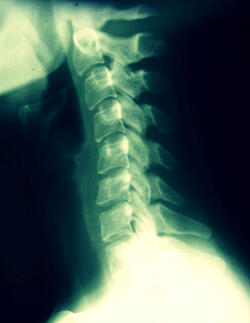JODI MATHY
HNI Senior Claims Specialist
Imagine this scenario: You have an employee who's been injured on the job. Chiropractic care is a treatment option. You can't choose the chiropractor for them, but you hope that your employee finds a chiropractor who's committed to improving your worker's wellness and will help your worker move on if treatment isn't progressing.
As an employer who's managing a workers compensation claim, you want three things:
- The best care for employees to help them become whole again
- A speedy recovery so that they can get back to work
- To know you're not being taken for a ride
Having confidence in the chiropractic care for work injuries you're paying for starts with some pointed questions. While you can't direct an injured employee to a specific chiropractor, you can do some reconnaissance to determine if the chiropractor could be trouble for work comp case management.
Here's what to look for during the employee's initial treatment and guidelines about how the chiropractor should respond — if he or she is truly committed to improving the health of your injured employee (vs. acquiring a customer indefinitely):
1.) "As an employer, these are my goals for chiropractic care for work injuries."
Communicate your expectations, including sharing a detailed description of your injured employee's job functions. (With hope, you practice physical abilities testing and fitness for duty exams.) The chiropractor needs to understand what recovery looks like and path treatment accordingly. There needs to be alignment (pun intended!) between the chiropractor, the employer, and the employee.
2.) "Yes, we have light-duty and desk work available."
Too often, an injured employee — likely someone who works in a very physical job — won't know that his employer can offer light-duty work and will tell the chiropractor that it's not an option. A chiropractor will be more than happy to return your injured worker to work with restrictions if you make the chiropractor aware that restricted duty can be provided.
3.) "We need an updated treatment plan every two weeks, and we need to address return-to-work restrictions then, too."
The gold standard for chiropractic treatment is three times per week for two weeks. At the end of two weeks, a chiropractor can evaluate the treatment's progress and make recommendations for the injured employee's work and the next steps for treatment. And there's a chance that after two weeks, chiropractic care may not be the best answer.
4.) "We use state statutes to evaluate the quality of treatment records."
This tells the chiropractor that unless the treatment records are complete and legible, you may deny payment. Many chiropractors punt on documentation; many are small business owners with lots of responsibilities, and they say they don't have time to dictate case notes. Wisconsin has strict standards for the documentation of chiropractic care; discover the standards in your state and adopt them for work comp cases.
5.) "When do you send out for MRIs? What local medical doctors do you work with?"
If the chiropractor can't talk about his relationships with other medical professionals and his referral process, this is a red flag. He could be interested in treating your employee indefinitely vs. sending your injured worker to a doctor who could help your employee get back to work faster (and save you work comp dollars). It also indicates that this chiropractor could be out of touch with work comp injury best practices. Don't be surprised if chiropractic care for work injuries isn't enough to fully heal an employee. A team of medical pros could be the ticket — if they're willing to collaborate.
6.) "Do you use a decompression table in treatment?"
This may seems like an odd question, but it can hep reveal the true quality of a chiropractor. A fancy decompression table with lots of lights and screens is no more than a device that performs traction. Treatment on a decompression table, sometimes called a DRX-900, can run into the thousands of dollars, and a physical therapist or another chiropractor likely can perform the same traction for less than $100 on a standard traction table with the same results.
What surprises you about these statements on chiropractic care for work injuries? Do you properly engage chiropractors treating your employees? Please share in comments.
Related Posts:
Chiropractic Terminology for Employers: Learn the Lingo
Expect Big Impact on Work Comp from Obesity Classification
WHITE PAPER: 10 Proven Strategies to Control Workers' Compensation Costs
How Medical Marijuana Insurance Issues Affect Your Work Comp Policies
.png?width=69&height=53&name=Acrisure%20Logo%20(White%20Horizontal).png)



